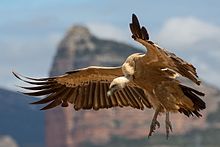Okay, so I have a species that are humanoid but have wings, and live up on mountain peaks, like where all the snow is. They are sentient like humans, and have the same level of intelligence. I'm wondering what adaptations they would need for them to be able to build structures and societies in the mountains. Right now, they're basically just humans with wings and thin layers of fur around their body. Not body hair, actual fur. They also have sharp teeth, since they can't grow much up in the mountains and have to eat animals. I need some suggestions and ideas to further improve on this.
For some examples, would they need more fur? How much? Would they need special hands/feet to make walking/landing on snow easier, like so they dont sink in. Or so they don't cause avalanches by disturbing snow? Would they need their size altered so they don't need as much oxygen when they're so high up? Wow would they be able to withstand harsh blizzards? Would their eyes be sharper so they could spot things when flying? Also, would their eyelids/eyelashes be changed at all, like to give protection when flying through the air or snow?
Those are all just example questions that I came up with on the spot. So I'm not looking for anything specific, just general ideas and suggestions for the anatomy of the species that would make where they live plausible, but while also keeping them at least vaguely humanoid. To sum up all the above thoughts, what kind of adaptations would a winged humanoid species need to have to be able to live on a mountain peak?

